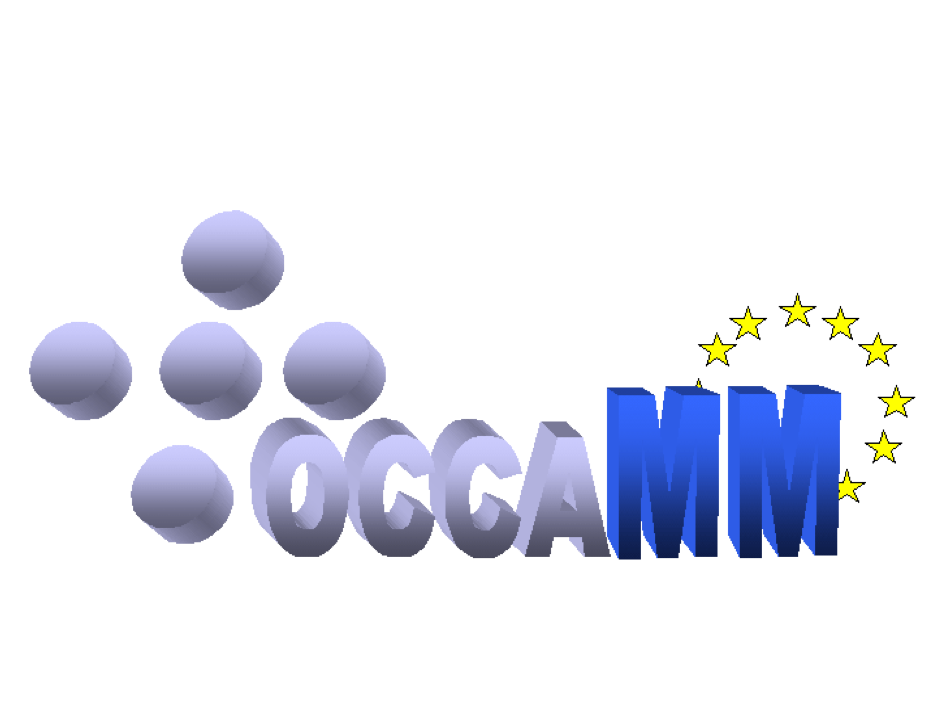Open Components for Controled Access to Multimedia Material - IST-1999-11443
The OCCAMM project addresses the problem of open architectures and interfaces for on-line access to digital content with IPR protection and management, seen as an evolutionary process from today's piecemeal initiatives to full-fledged multimedia. The activity concentrates on developing enabling tools for the controlled delivery and consumption of multimedia information over networks, as well as setting up prototype applications and services based on the selected technologies to prove their effectiveness. To that end, a test platform will be constructed which will incorporate state-of-the-art content protection tools into a secure infrastructure compliant to the specification of international standard bodies, including OPIMA, SDMI and MPEG. Trials will be conducted with this facility, involving real end-users both in the home and in schools, to validate innovative business models for the benefit of market operators.
Objectives:
The main objectives of the OCCAMM project are:
1) to specify and develop a series of enabling tools and components, compatible with emerging open standards (OPIMA, SDMI, MPEG), which will handle the controlled access, delivery, consumption and rights management of multimedia information;
2) to establish a number of commercially-driven applications utilising the aforementioned tools, which will deliver the needs of all participants in the above business;
3) to define and monitor performance levels in trial environments for such applications, and to point out additional actions needed for subsequent full and successful commercial exploitation.
The developed trial facility aims also at representing a European test-bed where new pieces of technology specified by the main standardisation fora in the field of content protection can be assessed and a co-ordinated European input to standard bodies can be provided.
Work description:
The main part of the work will be the implementation of open mechanisms and components in the framework suggested by the OPIMA architecture. Those components, together with existing or newly proposed tools for content identification and representation, information management and IPR management, will constitute a technological kernel around which prototype applications will be built for testing a number of innovative business models.
Applications are expected to address first controlled access to established forms of multimedia content, like music, educational material and still digital images; implemented services will then gradually extend their scope to finally include management of the full range of digital content types, based on most promising technological frameworks such as MPEG-4. In the course of the project, all these innovative techniques will be assembled into an OCCAMM test facility, exploiting existing communications and e-commerce infrastructures, by means of which different IPMP systems securely downloaded onto the OPIMA Virtual Machine will be exercised in laboratory and field trials in order to test interoperability between IPR protection components. User feedback will be collected in a structured and organised fashion, providing overall evaluation data highlighting criticalities of the implemented system and pros and cons of the selected business models. Performance of the chosen technologies in providing the requested functionalities and the level of robustness and reliability ensured by the implemented standards will thus be validated.
Following this path, the OCCAMM workplan has been split into eight Work Packages that can be grouped into the following four Work Areas:
Work Area 1: Models, requirements and specifications: WP1, P2
Work Area 2: Technical development and implementation: WP3, WP4, WP4, WP5, WP6
Work Area 3: User trials and results validation: WP7
Work Area 4: Project coordination and management: WP8
Milestones:
Project year 1 will be devoted to defining operational scenarios, requirements and specifications for the components and subsystems; meanwhile, technical activities will set up a first implementation of the OCCAMM system, featuring a limited though significant subset of functionalities.
Project year 2 will be spent turning the system into a fully-equipped end-to-end prototype platform to be put in the field during trials, collecting user feedback and analysing trial results.
| Research Centre | Research Group | Role in Project | Begin Date | End Date |
|---|---|---|---|---|
| ADETTI-IUL | Natural User Interaction Graphics And Mobility Group | Partner | 2019-09-19 | 2019-09-19 |
No records found.
| Name | Affiliation | Role in Project | Begin Date | End Date |
|---|---|---|---|---|
| Carlos Serrão | Professor Associado (DTDA); Integrated Researcher (ISTAR-Iscte); | Principal Researcher | 2000-01-31 | 2003-01-01 |
No records found.
No records found.
No records found.
No records found.
No records found.
No records found.

 Português
Português


